Do you have a porch that leaks where it meets your house, and you’re wondering what to do to stop the leak? You’ve come to the right place, for we have researched this question, and we have the answer for you.
Determine where the leak originates first. The short-term solution is to caulk the leaking areas where the siding of the house and the porch meet. However, the best way to stop the leak long-term is to install flashing on the porch's roof where it meets the house.
If you’re wondering what flashing is, the succeeding sections will explain it. We will also discuss how to install roof flashing to permanently fix your leaky roof. Read on!

What is roof flashing?
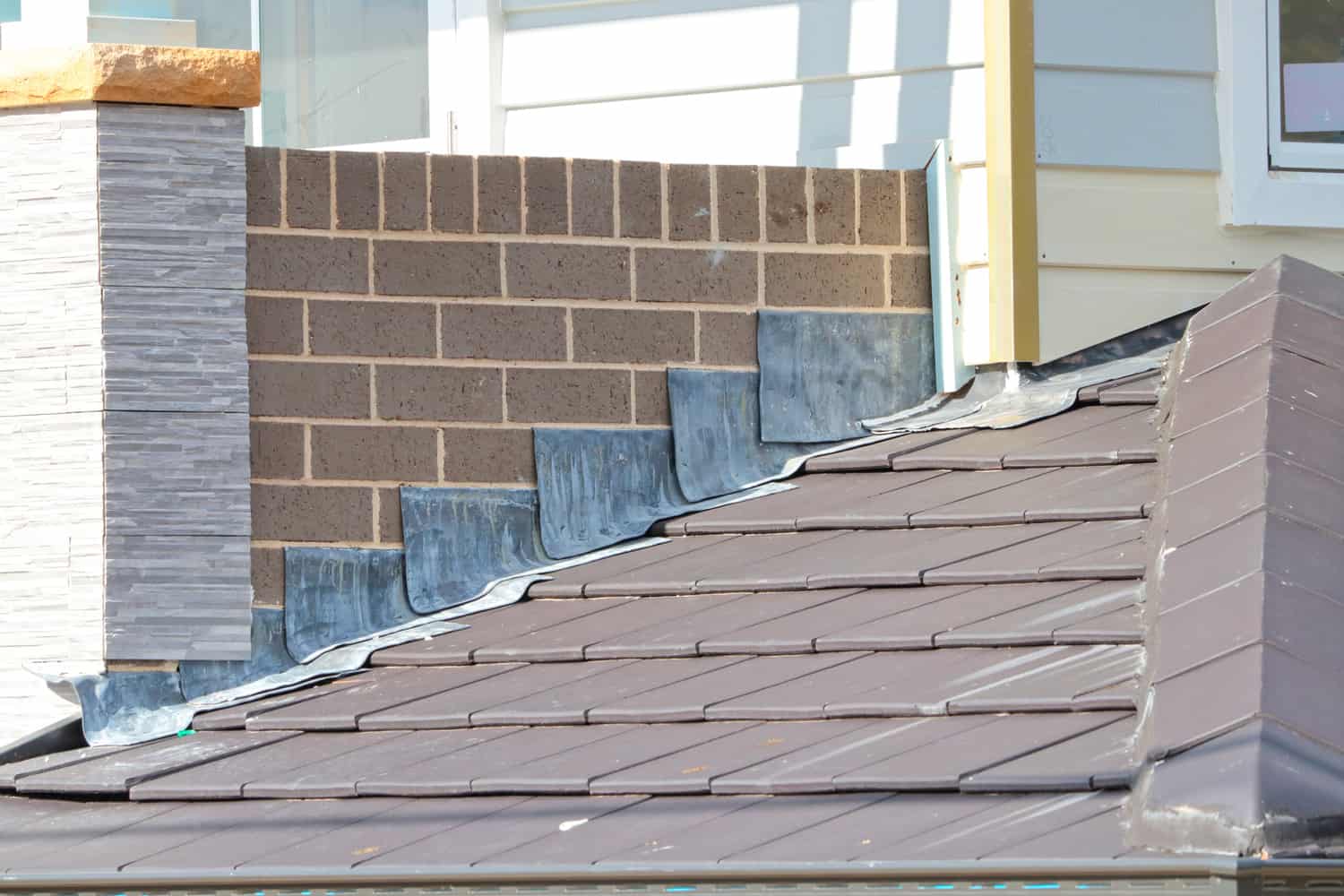
A roof flashing is a piece of a thin sheet of metal that roof installers use to redirect the flow of water away from specific areas like walls, vents, chimneys, skylights, and roof valleys. Every roof that includes any of the components above should have roof flashing installed to prevent leaks.
Any part of a roofing system that is vulnerable to leaks should have flashing. Even if that part is not leaking yet, it should have flashing as a preventive measure against an inevitable leak.
Aluminum, copper, and steel are the most commonly used metals for roof flashing. Of the three, steel is the most popular option. Steel provides a cheap roof flashing solution that gives you a clean finish. Copper gives a great aesthetic look, but it is more expensive than steel flashing.
How to install roof flashing?
If this is an old porch, then the culprit could be a badly installed flashing that has rusted and no longer protects the roof from leaks. If this is a new porch, then the installation might not have a roof flashing where the porch meets the siding of the house.
The installation steps that we provide here can apply to both scenarios with very little modification.
How to prepare the porch roof for the installation of roof flashing?
- Uninstall the siding where the porch roof and the house meet. Remove enough siding to expose 4 to 6 inches of the wall underneath.
- Uninstall the shingles on the porch roof to expose at least 4 to 6 inches of the roof deck underneath. Set them aside. If you need to return the shingles in a specific order, you can arrange them when you set them aside in the same way that they were before you uninstalled them.
- Inspect the underlying wall. If there is an ongoing leak, you will see a mark on the wall where water has been. This will tell you exactly where the leak is. However, the more important reason for inspecting the wall is to check for the presence of mold and wood rot. Water leaks can cause the underlying wood to rot, have a mold infestation, or both.
- Inspect the roof rafters of the porch to check for possible wood rot and mold.
- Any part of the wall and roof rafters with wood rot should be fixed and replaced first before the installation can proceed.
- Use denatured alcohol on a clean rag to wipe the area clean of any mold. Alternatively, you can use a sprayer and spray the alcohol on the mold. Let it soak, then wipe of with a clean rag.
- Inspect the siding for damage.
- Inspect the shingles if any of them need to be replaced.
- Clean the area where the flashing will be installed.
How to install flashing on a porch roof?
- Apply a line of silicone caulk where the roof of the porch meets the house.
- Position the flashing on the roof deck of the porch and use stainless steel roofing nails to secure the flashing on the roof deck. Install a nail every 12 inches.
- Depending on the length of the flashing that you will need to install, you might need to overlap multiple flashing sheets to get the required length. Overlap the flashing by at least 4 inches.
- Apply caulk on the surface where two flashing sheets will overlap.
- Repeat steps 2 to 4 until you’ve covered the entire length of the area where the porch meets the house.
- Reinstall the shingles above the flashing. Replace any shingles that have damage or show signs of wear.
- Reinstall the wall siding on top of the flashing. Replace any siding that has visible damage or shows signs of extreme wear.
How to stop my porch from blowing rain?
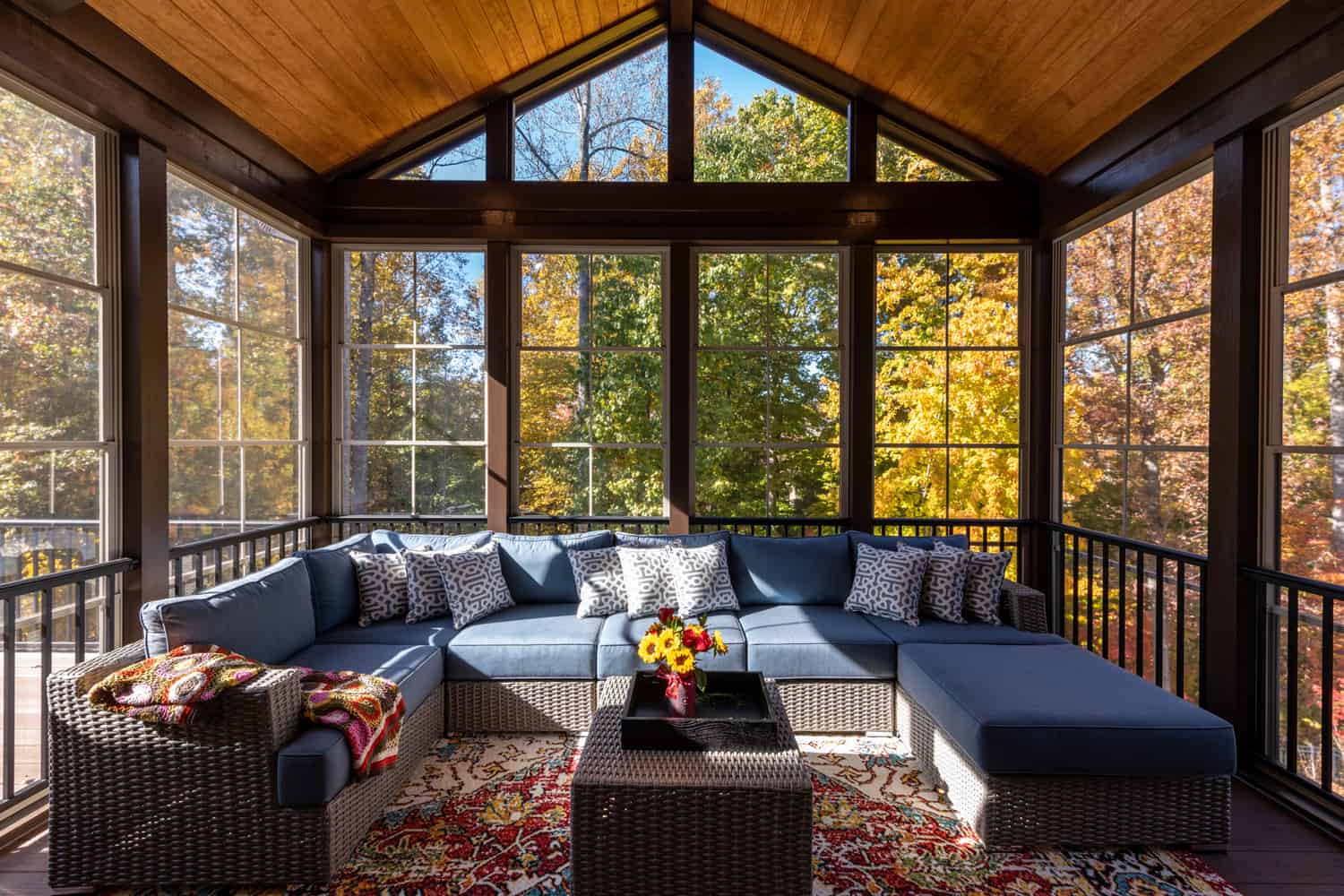
Now that we’ve taken care of that leak, you can relax on your porch and fall asleep while listening to the rhythmic sound of falling rain on the roof. That is until the rain gets blown in.
One common problem with a screened porch is rain that gets blown in by strong winds. Installing a rain screen is one of the ways to prevent rainwater from getting into your porch.
Window Shades
Your first option is a window shade that can be unrolled when you need protection from the rain. You can then roll it up when you don’t need it. They are simple to install, and they come in different styles that you can match with your porch. You can install multiple window shades if you have a large area to cover.
The Redi Shade Easy Lift Trim-At-Home fabric shade is available on Amazon. Check it out through this link.
Weighted Water-resistant Curtains
You also have the option to install curtains that are made of waterproof fabric like oilcloth or Gore-Tex. This option has the advantage of being available in hundreds of colors and patterns. You can prevent them from being blown by the wind by sewing small weights into the bottom hem of the curtains.
Landscaping
A long-term solution is to plant trees to cover your porch from the rain. A tree will not be able to block all the rain during a heavy storm, but it will reduce the need for heavy window shades.
One disadvantage of planting trees or shrubs to block the rain is that they also block the wind. This can be a negative for porches that use the wind to regulate airflow.
Another disadvantage is that trees can block the view.
How to seal your porch?
If your porch does not have a rain screen to protect it from rain, the floors will be constantly wet from the rain. It would be a good idea to apply a wood sealer to your porch floor.
A sealer is a group of various products that provide protection for wood. If your porch has a wooden floor that is exposed to the elements, you’ll want to seal the wood on the floor to protect it and make it last longer than when it is unsealed.
Sealers also protect the wood from moisture, chemicals, and even cleaning products.
The easiest way to seal your porch floor is by using a garden sprayer. Fill the garden sprayer with your chosen wood sealer—different wood sealers can provide different benefits to your wooden floor.
Pressurize the garden sprayer's tank and adjust the nozzle to spray a fine mist. This will create a fine layer of wood sealer on your wooden floor. If the nozzle is not set to spray a fine mist, the wood sealer will create a thick layer on the wood.
Different sealers have different curing times. Make sure to check the recommended curing and drying time on the can of your sealer. Let your wooden porch floor dry and cure for the recommended time before you put back any of the furniture or before you step on the floor.
The 5-gallon pail of Ready Seal, a natural cedar exterior wood sealer, is available on Amazon. Check it out through this link.
What are porch enclosures?
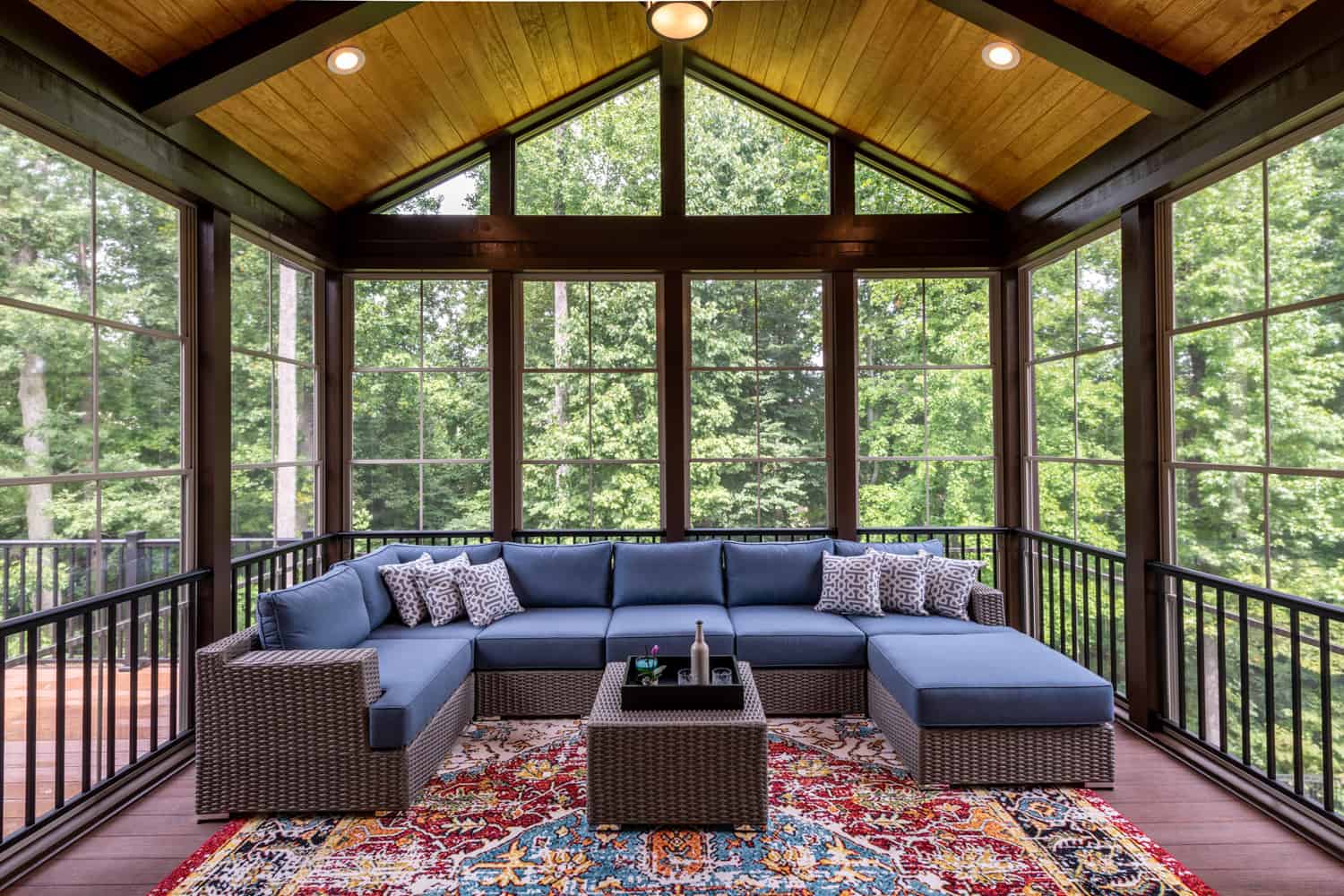
If a screened porch seems inadequate in providing you with a sheltered outdoor living area, then a porch enclosure might be the solution that you are looking for.
A porch enclosure turns your porch—even patio or deck—into an enclosed outdoor living space. Porch enclosures involve the installation of glass walls and glass doors to a porch. Some enclosed porches even have a semi-transparent roof that takes advantage of natural light for the porch.
What are the differences between a porch, a veranda, and a gazebo?
Porch
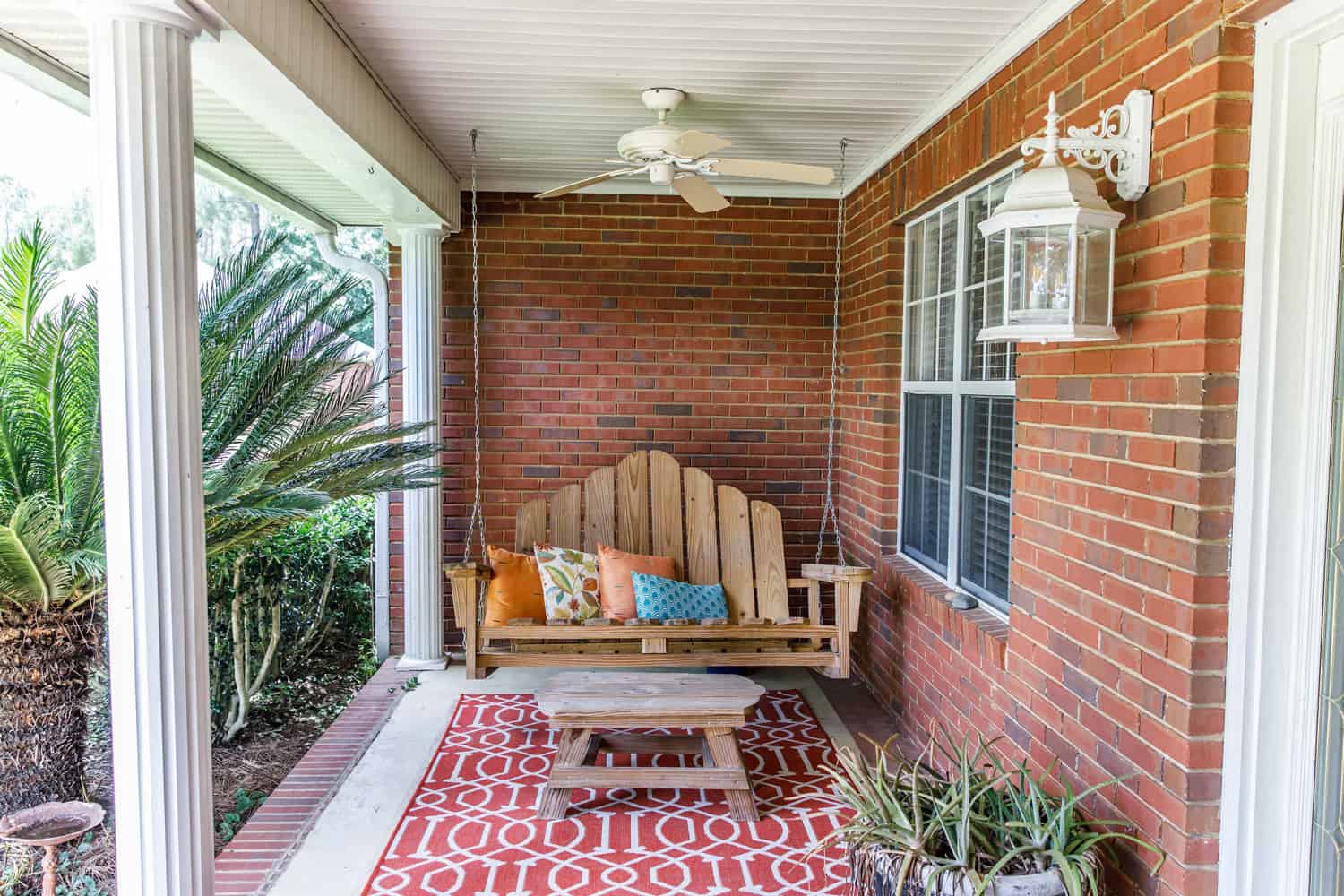
A porch is any covered shelter that extends from the house's main entrance. The structure of a porch is separate and external to the walls and structure of the house. However, a porch can be enclosed by columns or screens.
Veranda
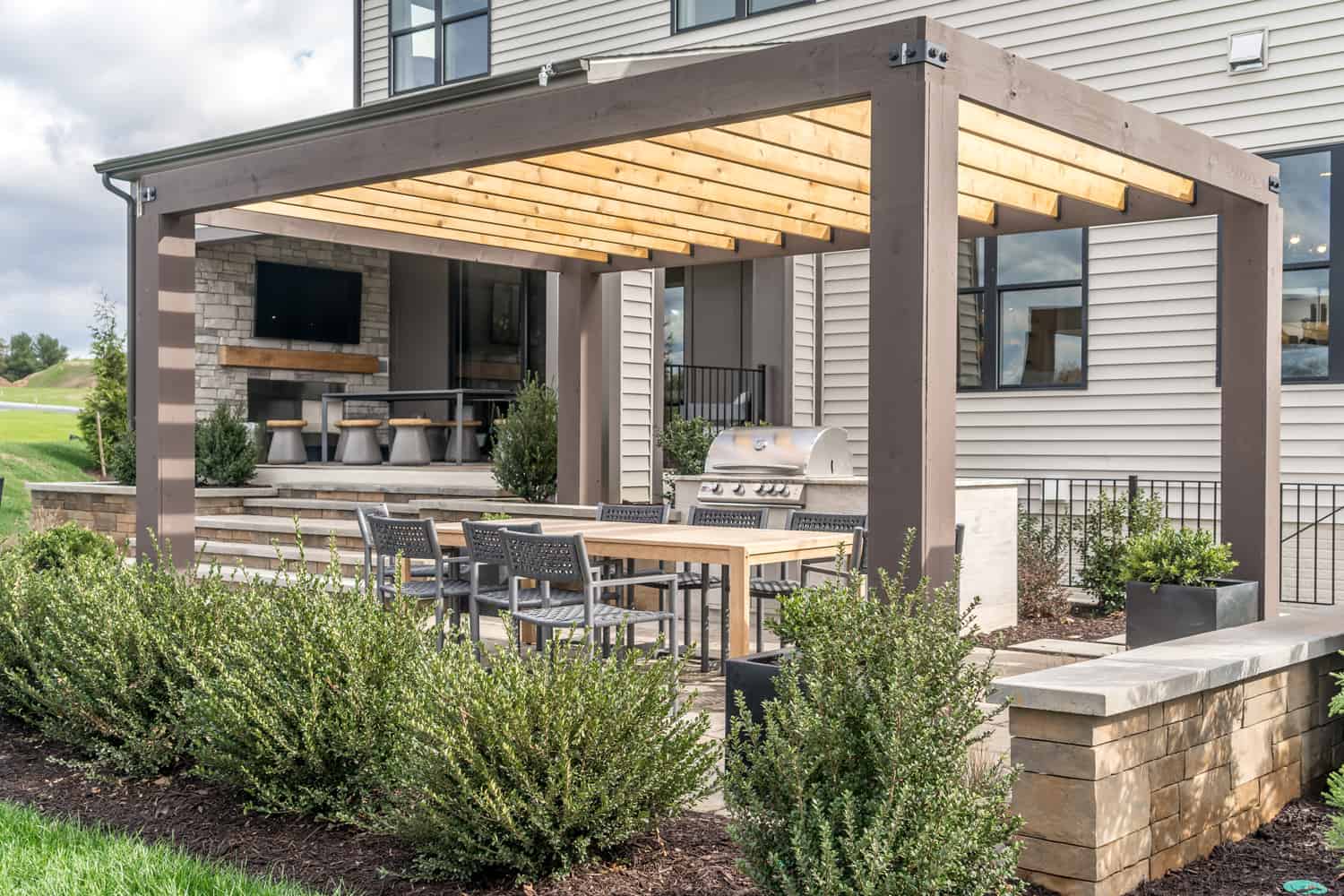
On the other hand, a veranda is a roofed open-air gallery or porch that is often partially enclosed by low railings. It extends from the front and sides of the house. Thus, a porch that wraps around the house is a veranda.
Gazebo
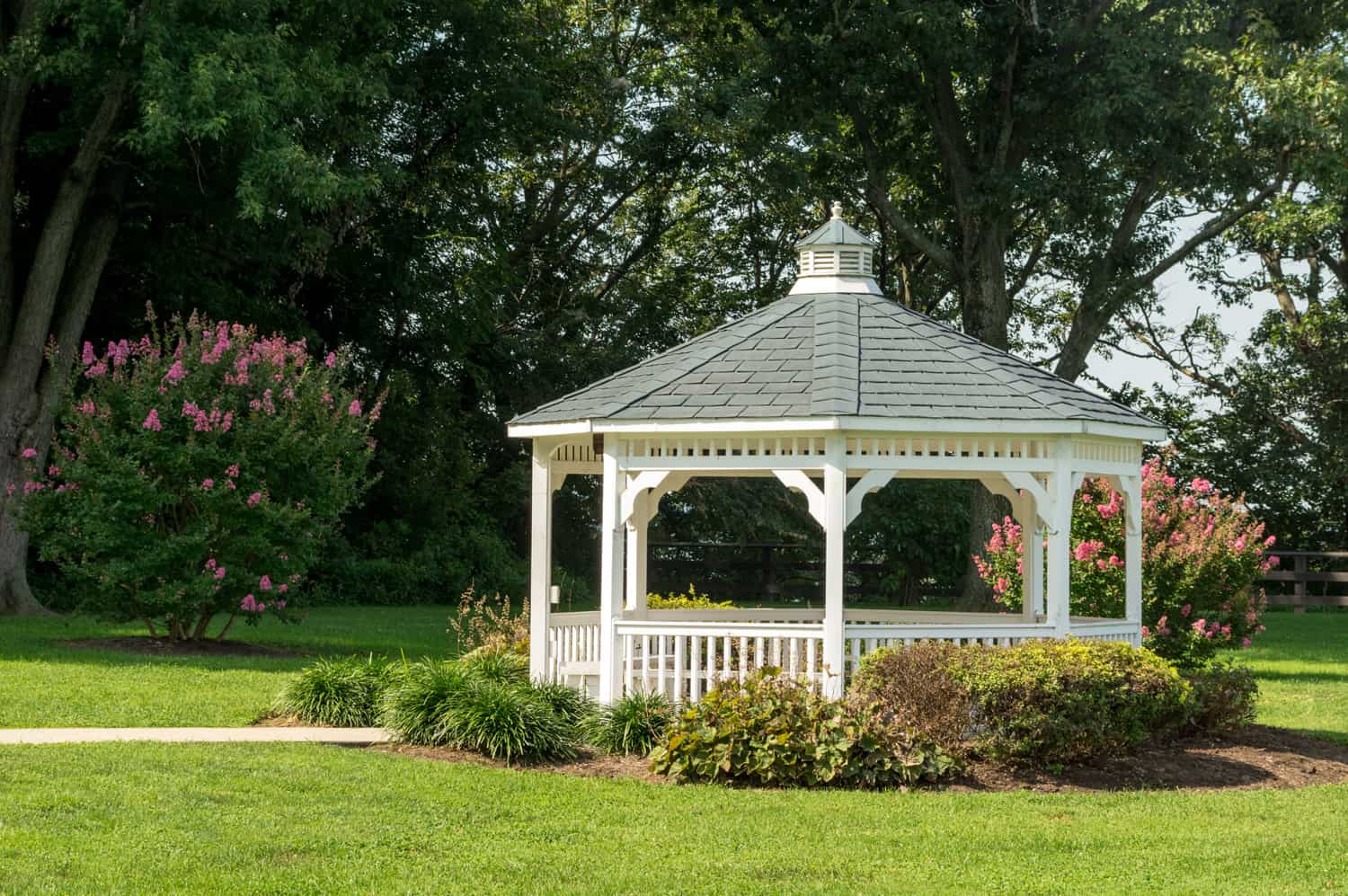
Gazebos are often either round or octagonal in shape and often feature a dome-shaped roof. It commonly has columns that support the roof that is equidistant from each other. Unlike a porch and a veranda, you do not need to connect a gazebo to the house.
Conclusion
Fixing a leaky roof where the porch and the house meet can be an easy DIY task. You get the option to solve it with a short-term solution or with a long-term solution.
If you enjoyed reading this article, you might find the articles below equally enjoyable to read:
What Is The Best Material For A Porch Floor? [A Complete Guide]


